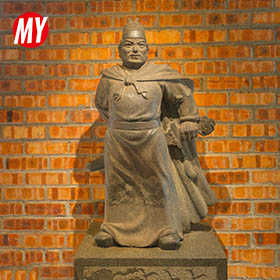
Malacca (Melaka) is a historic seaside town guarding the Strait of Malacca, which sits on the maritime route between the Pacific and Indian Oceans and has been an important trading city since ancient times. After 1511, Malacca was once under the colonial rule of European powers such as Portugal, the Netherlands and Britain.
Imprint of the Colonial Era
In 1511, the Portuguese conquered Malacca by force in order to trade with it, ending the golden age of the Sultanate of Malacca. In order to consolidate their dominance, the Portuguese built the A Famosa Fort in Malacca.

Porta de Santiago
Built by Portuguese, Destroyed By British
The Porta de Santiago gateway, at the foot of Malacca Hill was built in 1511 and is the only remaining part of the A Famosa Fortress built by the Portuguese colonists. It is one of the oldest surviving European-style buildings in Asia and is now a symbol of the colonial era in Malacca.

St. Paul's Hill And St. Paul's Church
Landing Place of Catholic Saints
St. Paul's Church in Malacca is located at the top of St. Paul's Hill and was made famous by the visit of the famous missionary St. Francis Xavier. Today, only the remains of St. Paul's Church exist. Inside the church, there are tombstones of foreigners and St. Francis Xavier and a statue of him standing in front of the church.
The Dutch took over the administration of Malacca from the Portuguese in 1642 and began a colonial rule that lasted nearly two hundred years. In the nineteenth century, Malacca was occupied by Britain and Japan, and it was not until 1957 that Malaysia declared its independence. The old town of Malacca still bears imprints of the colonial era, including Dutch Square and the Stadthuys, some of which have become the oldest European-style buildings in Asia.

Dutch Square And Christ Church
Red Mark of the Colonial Era
Located on the banks of the Malacca River, Dutch Square is a famous tourist attraction in the historic city of Malacca. The buildings surrounding Dutch Square, such as Christ Church and the Stadthuys, have brick-red facades, hence the name Red Square. The square is also home to the clock tower and the Queen Victoria Fountain.

Stadthuys / History And Ethnography Museum
The Oldest Dutch Building in Asia
The Stadthuys is located on the south side of Malacca Dutch Square, built in 1650, and is the oldest surviving Dutch building in Asia. The Stadthuys is now used by the Malacca History and Ethnography Museum, which introduces the historical trajectory of Malacca and its ethnic traditional cultures.
Chinese Culture in Malacca
Chinese people make up a large proportion of the population in Malacca. As early as the Ming Dynasty, there were many Chinese merchants who traveled across the ocean to trade in Malacca. Some of them settled down in Malacca as they made their fortunes, while others died in foreign lands and were buried here before their dreams come true. To this day, the most lively place in Malacca is Jonker Street (Jonker Walk, Chinatown of Malacca), where many Chinese halls and temples remain.

Jonker Street
Street of Weekend Night Markets
Jonker Walk is in the heart of the old town of Malacca. It is also known as the Chinatown of Malacca, along with the surrounding streets, Chinese guild halls and temples. A night market is held from Friday to Sunday, and in 2008, it was added to the World Heritage List.

Poh San Teng Temple
Historic Chinese Burial Mounds
Malacca's Poh San Teng Temple was built at the foot of Mount Bukit China, which is said to have been where Zheng He was stationed during his voyage. The area is the largest Chinese burial ground in Malacca, and the temple was built to pray for the deceased and is dedicated to Fude Zhengshen.





























